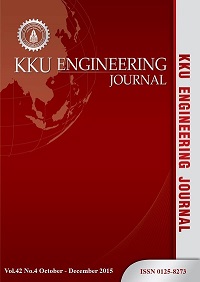Daylighting for energy conservation in an existing building under tropical climate conditions: a case study of Lai Sue Thai building Ramkhamhaeng University
Main Article Content
Abstract
Daylighting using skylight has been shown to have a high potential in reducing electrical lighting energy, and could provide a more pleasant atmosphere of a daylit space. However, in hot climates, the main constraint of daylighting is the solar heat gain that contributes to major heat load for an air-conditioning system. If the balance between the beneficial light gain used to offset lighting energy requirement and heat gain from daylight is well considered, significant energy savings can be obtained. The main objective of the study is to evaluate the potential of daylighting for energy conservation in the tropics through theoretical analysis (simulation study) and experimental observation. Lai Sue Thai Building (an existing and educational building) located at Ramkhamkaeng University was selected as a case study. From analysis, use of daylight could reduce electrical energy in this building by up to 76% compared to the initial condition where fully lighting was supplied. Window orientation would also play an important role. Moreover, heat gain through windows due to daylighting can be controlled by overhangs and the appropriate Window-to-Wall ratio that would be about 30% for this building. An experimental study was also carried out to validate the results in a selected room. About 49% and 37% of Relative Root Mean Square Error (RRMSE) were observed in light and heat measurements, respectively.
Article Details
This work is licensed under a Creative Commons Attribution-NonCommercial-NoDerivatives 4.0 International License.



